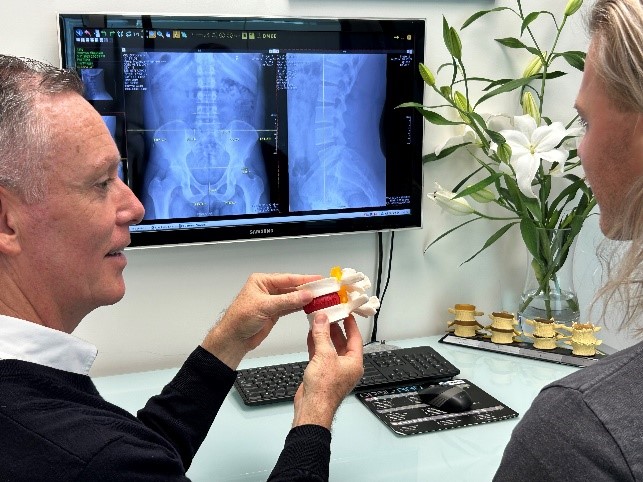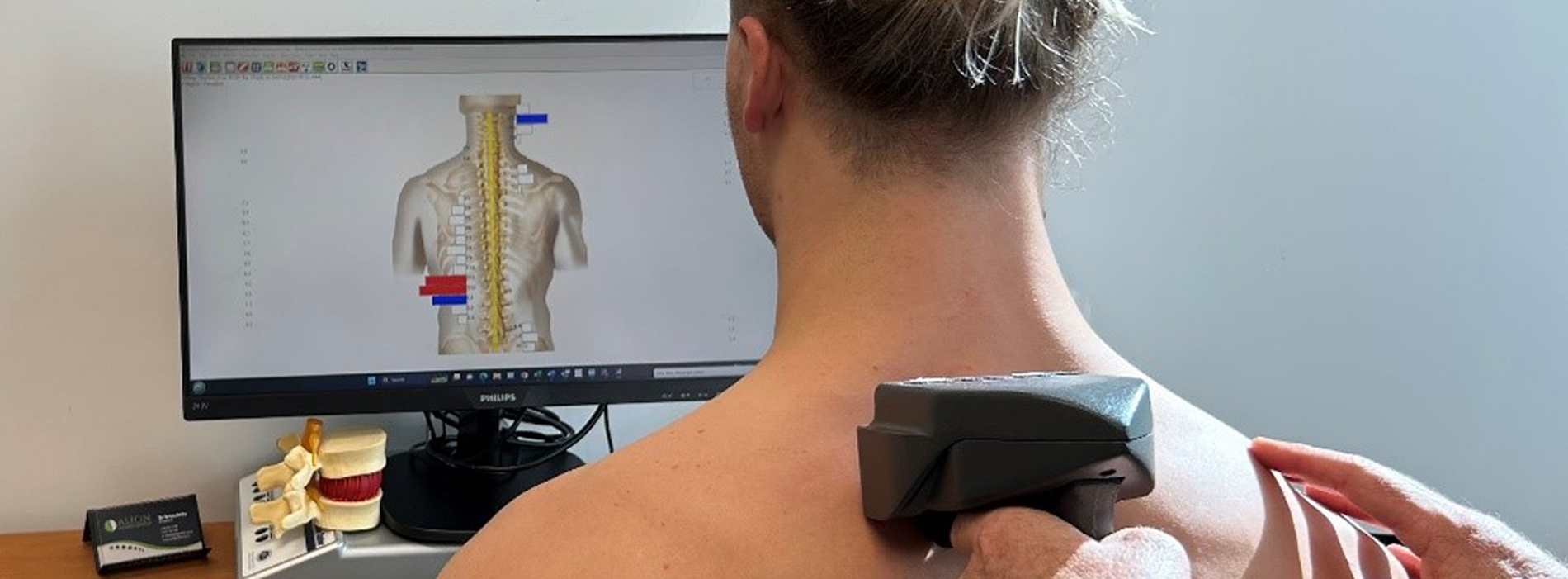What Techniques Do We Use?
There are a variety of specific chiropractic techniques we use to get the best results for our patients. Our goal is to improve spinal biomechanics and reduce nervous system interference. We have attended, and continue to attend post-graduate courses to build on our experience and expertise. We strive to provide you with excellent care.
Click On One Of Our Techniques To Find Out More
Activator Methods Technique
The Activator Method® is one of the most widely researched techniques in the world. It includes a system of spinal evaluation combined with a handheld adjusting instrument that delivers a consistent high speed and low force. Because it’s up to 100 times faster than adjustments delivered by hand, the body rarely tightens to resist, making adjustments comfortable and effective. We utilize the Activator adjusting instrument for spinal and extremity adjustments. It is also appropriate for seniors, children and newborns.
Atlas Orthogonal (AO) Technique
The Atlas Orthogonal Technique is a highly-specialized form of chiropractic focused on restoring body balance through upper cervical spinal corrections. In particular, the focus is on the first bone in the neck, also known as the atlas vertebra (C1). Misalignment of this vertebra can lead to both physical and mental stress throughout the body.
In simple terms, the goal of the procedure is to gently move the atlas vertebra into a better position relative to the spine below and skull above. When nerve function, CSF and blood flow between the two are restricted; pain, tension and a variety of other health conditions—sometimes chronic—can result. By re-aligning this critical bone, significant health changes can occur.
Patients experience very little sensation during an Atlas Orthogonal adjustment. The chiropractor uses specific x-ray views to determine the vectors for correction, and a specialised adjusting instrument is used that gently moves the atlas vertebra into a better position relative to the skull and spine. Unlike other types of chiropractic adjustment that involve larger amounts of directed force and sometimes produce a popping sound (referred to as “cavitation”), this technique requires only minute adjustments of the atlas bone in order to initiate healing and relief.
Cranial Adjustments
Cranial subluxations or cranial ‘faults’ can cause a wide range of symptoms from headaches and blurred vision to learning problems in children. They can occur during childbirth, an injury during childhood, or through head trauma or concussion.
The skull is made up of a number of separate bones that fit together like a puzzle. The amount of movement between bones is very small, but if these bones are misaligned they can in extreme cases cause the face to move out of shape.
These cranial misalignments can interfere with the cerebrospinal fluid moving naturally around the brain. This can compromise the natural function of the brain. Some of the common symptoms can be cognitive, learning difficulties, or headaches.
Who can benefit from cranial adjusting?
Anyone who has suffered any type of head trauma, including:
• Those who suffered head trauma at birth due to forceps, or suction
• People who have had trauma to the head due to childhood falls
• Rugby players, hockey players and other athletes who suffer blows to the head
• Anyone suffering from post- concussion syndrome
Cranial adjustments, and chiropractic care in general are very safe for children. They are gentle and most people find them relaxing.
Diversified Technique
One of the most common techniques used to correct spinal subluxations in the world is the Diversified Technique. After analyzing the areas of subluxation, a specific manual thrust is delivered.
The direction, speed, depth and angle that are used is the result of a detailed understanding of spinal biomechanics.
The energy delivered during the thrust may produce a slight “popping” sound from the shifting of gas and fluids in the joint. While this sound may be a good dinner table conversation, it is not a guide as to the value or effectiveness of the adjustment.
Improving spinal biomechanics can reduce nervous system interferences; additionally, all joints of the body can be adjusted to help restore proper range of motion and function.
Extremity Technique
Every joint in the body has the potential to misalign, including non-spinal joints. Extremity adjustments are designed to improve the alignment and function of the TMJ, shoulders, ribs, elbows, wrists, fingers, hips, knees, ankles, feet and toes.
Gonstead Technique
The focus of the Gonstead adjustment is to be as precise and accurate as possible, addressing only the areas of subluxation. Great care is taken to ensure a bio-mechanically correct position and precise force to provide the most accurate and painless adjustment possible. This is partly achieved through detailed x-ray analysis, heat readings in the spine and motion palpation. The objective of the Gonstead approach is to restore and maintain optimal health by locating and correcting any interference to the nervous system caused by vertebral subluxation.
“Find the subluxation, accept it where you find it, correct it and leave it alone.” – C.S. Gonstead D.C.
Laser
Low Level Laser Therapy (LLLT) or cold laser is used extensively in the USA, however is not very common in New Zealand. This type of laser uses specific wavelengths of light to interact with tissue to help accelerate the healing process. It is used in a variety of acute and chronic conditions, to help eliminate pain, swelling, reduce spasms and increase function. It is used extensively on athletes and those with tendon and soft tissue injuries.
It is called Cold Laser because it doesn’t heat tissue. It uses a low level laser combining a synchronous frequency of red LED light, infrared light, and infrared laser which passes through a static magnetic field. It is this specialised combination of light energy which optimises the healing response.
Low Level Laser Therapy improves the signaling within a cell. Mitochondria (which is in charge of a cells energy production) is believed to play a key role in the healing response with this type of laser.
Mitochondria have photo receptors (light receptors) which respond to light energy (photonic energy). Laser Therapy improves cell communication between its membrane, nucleus and the mitochondria, which ultimately results in the mitochondria being able to produce more energy (Adenosine triphosphate or ATP), leading to better cell function, pain relief and healing.
More than 3,000 research papers have been published concerning the application and effectiveness of laser.
Thompson Technique
The Thompson Terminal Point technique is a system of analysis and spinal adjustment. It involves a special table that reduces the amount of energy needed to adjust your spine.
Developed by Dr. J. Clay Thompson, the Thompson Technique delivers precise adjustments and offer a high level of patient comfort.
The adjustment involves a segmental “drop” table. Individual cushions or “drop pieces” located on the table surface support each area of your spine until the adjustment is delivered. Then each drop piece gently gives way, reducing the amount of energy required to move a specific spinal segment.
Toggle Recoil
Toggle Recoil is a very specialised upper cervical technique that involves a fast and gentle adjustment to the upper vertebrae in the neck. Patients are usually laying on their side on a specialised table, and we use our hands to deliver a quick contact to make the adjustment.
The upper cervical spine is the most highly innervated area of your spine. Subtle changes in this area can have whole-body effects. Because of its importance, this special adjusting technique produces positive results for a variety of health problems.


